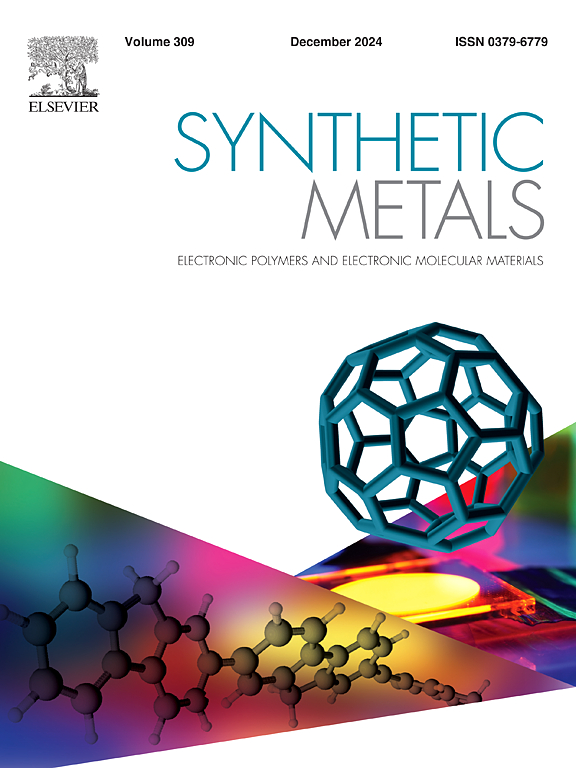IF 4
3区 材料科学
Q2 MATERIALS SCIENCE, MULTIDISCIPLINARY
引用次数: 0
摘要
利用最新开发的单向浮动薄膜转移(FTM)方法制备了可溶液加工的有机半导体共聚物 PFO-DBT 的定向均匀薄膜,并将其作为有源半导体置于表面钝化的 Si/SiO2 作为栅介质上,以底栅顶接触器件结构制备了有机光电晶体管(OPT)。我们系统地研究了 SiO2 的不同钝化,如超薄旋涂环状透明光学聚合物(CYTOP)和六甲基二硅氮烷(HMDS)自组装单层对 OPT 的各向异性电荷传输和器件性能的影响。FTM 加工的薄膜在薄膜中具有良好的光学各向异性,在 OPT 中具有良好的电各向异性。随着表面特性的改善和各向异性的增强,该器件在黑暗条件下的电荷载流子迁移率达到了 7.8 × 10-3 cm2/V-sec,导通/关断比达到了 105 的数量级,阈值电压为 -4V。在 525 纳米单色绿光和 0.15 mW/cm2 低功率密度的照射下,该工作中制作的 OPT 显示出接近 104 数量级的光敏性和 17 A/W 的相应响应度。这些结果有望在可见光区域制造出具有更高的迁移率、光敏性和光响应性的 OPT。本文章由计算机程序翻译,如有差异,请以英文原文为准。
Influence of surface passivation aiming towards enhancing the performance of organic phototransistor fabricated using oriented thin films of PFO-DBT
Oriented and uniform thin films of solution-processable organic semiconducting copolymer PFO-DBT were fabricated using a recently developed unidirectional floating film transfer (FTM) method and used as an active semiconductor on surface passivated Si/SiO2 as gate dielectric to fabricate organic phototransistor (OPT) in the bottom gate top contact device architecture. The influence of different passivation of SiO2 such as an ultrathin spin-coated cyclic transparent optical polymer (CYTOP) and the self-assembled monolayer of hexamethyldisilazane (HMDS) on anisotropic charge transport and device performance of OPTs have been systematically investigated. FTM-processed thin films provided good optical anisotropy in thin films and electrical anisotropy in the OPTs. With improved surface properties and enhanced anisotropies, the device showed a charge carrier mobility of 7.8 × 10-3 cm2/V-sec, on/off ratio in the order of 105, and a threshold voltage of -4V under dark conditions. OPTs fabricated in this work demonstrated photosensitivity nearly of order 104 and a corresponding responsivity of 17 A/W under the illumination of 525 nm monochromatic green light with a low power density of 0.15 mW/cm2. The results are promising for making OPTs with enhanced mobility, photosensitivity and photo-responsivity in the visible region.
求助全文
通过发布文献求助,成功后即可免费获取论文全文。
去求助
来源期刊

Synthetic Metals
工程技术-材料科学:综合
CiteScore
8.30
自引率
4.50%
发文量
189
审稿时长
33 days
期刊介绍:
This journal is an international medium for the rapid publication of original research papers, short communications and subject reviews dealing with research on and applications of electronic polymers and electronic molecular materials including novel carbon architectures. These functional materials have the properties of metals, semiconductors or magnets and are distinguishable from elemental and alloy/binary metals, semiconductors and magnets.
 求助内容:
求助内容: 应助结果提醒方式:
应助结果提醒方式:


